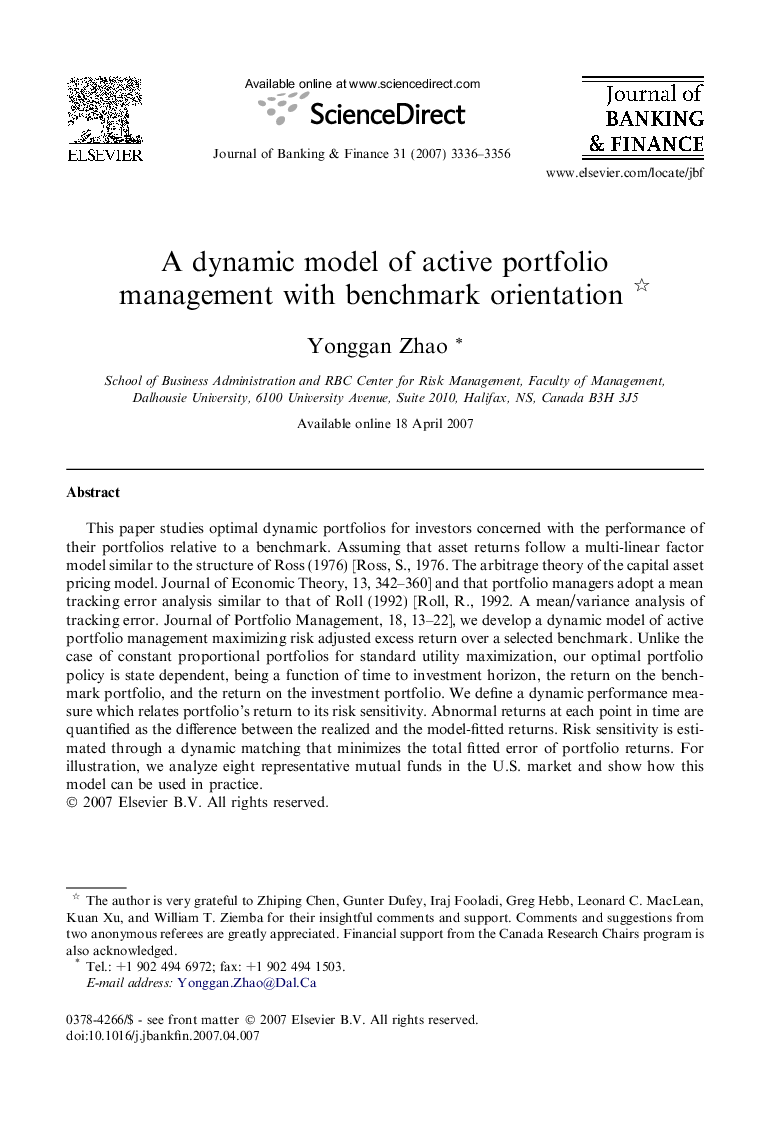| Article ID | Journal | Published Year | Pages | File Type |
|---|---|---|---|---|
| 5090919 | Journal of Banking & Finance | 2007 | 21 Pages |
Abstract
This paper studies optimal dynamic portfolios for investors concerned with the performance of their portfolios relative to a benchmark. Assuming that asset returns follow a multi-linear factor model similar to the structure of Ross (1976) [Ross, S., 1976. The arbitrage theory of the capital asset pricing model. Journal of Economic Theory, 13, 342-360] and that portfolio managers adopt a mean tracking error analysis similar to that of Roll (1992) [Roll, R., 1992. A mean/variance analysis of tracking error. Journal of Portfolio Management, 18, 13-22], we develop a dynamic model of active portfolio management maximizing risk adjusted excess return over a selected benchmark. Unlike the case of constant proportional portfolios for standard utility maximization, our optimal portfolio policy is state dependent, being a function of time to investment horizon, the return on the benchmark portfolio, and the return on the investment portfolio. We define a dynamic performance measure which relates portfolio's return to its risk sensitivity. Abnormal returns at each point in time are quantified as the difference between the realized and the model-fitted returns. Risk sensitivity is estimated through a dynamic matching that minimizes the total fitted error of portfolio returns. For illustration, we analyze eight representative mutual funds in the U.S. market and show how this model can be used in practice.
Related Topics
Social Sciences and Humanities
Economics, Econometrics and Finance
Economics and Econometrics
Authors
Yonggan Zhao,
